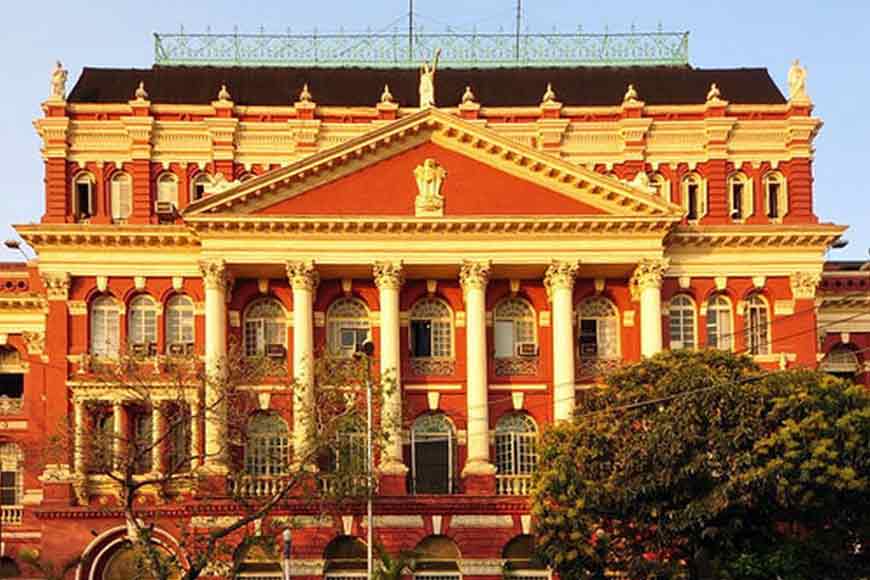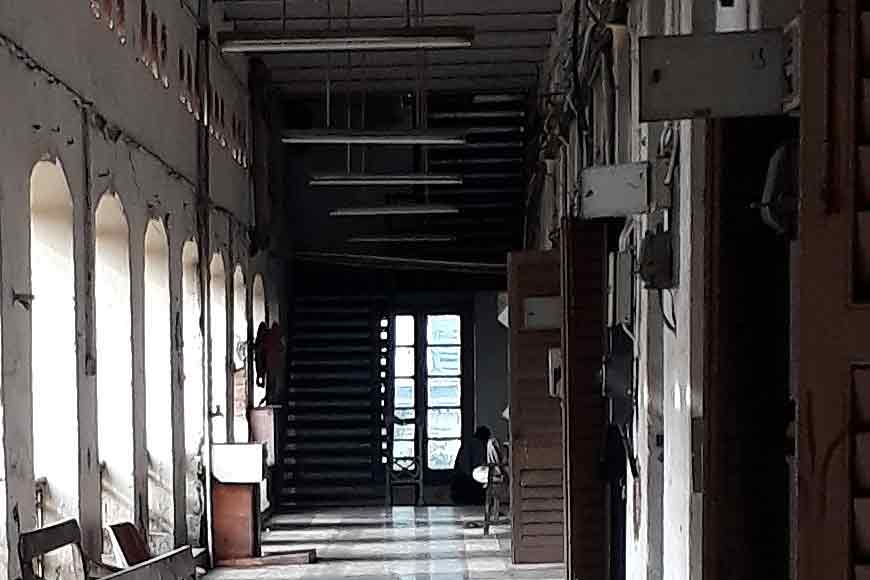Hauntings and history blend at Writers’ Building

A few weeks ago, we had told you about the ghosts of Garden Reach, one among Kolkata’s many historically haunted locations. When it comes to heritage and hauntings, however, few locations could be more appropriate than the unimaginatively named Writers’ Building, for centuries the symbol of British rule in India, and then the seat of the West Bengal government until the move to Nabanna a few years ago.
Writers’, as the people of Kolkata have always called it, was originally the administrative office for ‘writers’ or junior clerks of the British East India Company. Designed by Thomas Lyon in 1777, Writers’ Building went through a series of extensions over the centuries. Post-1947, it became the office of the Chief Minister, cabinet ministers and other administrative officials until 2013, when the government announced a major restoration of the building and most of the departments moved out to Nabanna on a temporary basis.
Those of our readers who have been inside the building will understand why it was referred to as a ‘mini-township’, with a built-up area of around 550,000 square feet. As of 2013, the building housed 34 state government departments, and accommodated roughly 6,000 employees. These figures are likely to change post-renovation, but that is a matter for the future.
An assortment of 20-odd pucca houses built in 1776 transformed into the five huge red-brick blocks which we know as Writers, between 1877 and 1882. Prior to the pucca buildings, in 1709, the land housed four thatched-roof mud houses, where the writers would sit and conduct business. Still earlier, the plot of land served as a burial ground for the young clerks who were originally housed on the ground floor of the old Fort William, which is where the GPO stands today. Many employees on night duty at Writers’ believed that the root of the hauntings in the building can be traced back to its burial ground days.
Ghosts of the past
Watchmen and security staff have reported serial disturbances on the first floor of block five, so much so that none of the security staff will go there alone at night. Among the noises to be heard as one approaches the block are the rattling of windows even on windless nights, the sounds of typing coming from locked rooms, moans from invisible people apparently in pain, and strong sounds of heavy marching boots.

In the 1970s, a leading Calcutta daily published an account of night guard Munshiram who, while patrolling the first block corridor on the first floor, came upon a strange apparition of a White man in a suit, apparently badly injured and bent over. The man emerged from the Central Despatch Office and disappeared down the central staircase, followed by a few more shadowy figures. Simultaneously, Munshiram also heard the sounds of heavy boots coming up the staircase. Panic stricken, he called out to the sentry on duty on block one, and then fainted.
In his account, Munshiram claimed that the whole of the first floor, in fact, was the haunt of several resident ghosts, and recalled yet another terrifying vision, in block three this time. On duty in the block’s protected area, he noticed a neon light burning in a minister’s chamber, and clearly heard music coming from it. Assuming some kind of emergency meeting had been convened, he walked up to the room and peeped in to see a group of men in old-fashioned clothes apparently engaged in drunken revelry, as the young writers used to do when they lived here. Munshiram’s screams brought on duty police personnel rushing to the spot, by which time the room had gone back to being dark and silent.
Yet another notable ghost sighting in block five is attributed to Zamiruddin, the equivalent of head of housekeeping at Writers’ during the tenures of several chief ministers, including Dr B.C. Roy. In a published account, Zamiruddin recounted how, on a night when he had been asked to clean up Dr Roy’s chambers for an emergency meeting, he had a terrifying encounter with a ghostly armed security guard outside the locked officers’ lavatory, who kept vanishing into the lavatory and reappearing from the direction of block one. A few months later, a man identified only as Tiwari, an elderly durwan on the verge of retirement, apparently suffered a heart failure and dropped dead right outside that same lavatory.
And finally, how can a history of hauntings at Writers’ not include a reference to the ‘Battle of the Corridors’ or অলিন্দ যুদ্ধ, the stunning assault on the headquarters of British India mounted by three young men on December 8, 1930? Impeccably dressed in European clothes and carrying loaded firearms, Benoy Basu (22), Badal Gupta (18) and Dinesh Gupta (19) shot dead the notorious Inspector General of Police, Colonel N.S. Simpson, infamous for his brutal torture of political prisoners, and held off an entire force of heavily armed policemen for several minutes before attempting to take their own lives. While Benoy and Badal successfully poisoned and shot themselves, Dinesh survived, to be hanged in 1931.
According to another published account from the late 1970s, a young night guard called Mehboob was on duty on the first floor of block four. Having sat down to rest his tired legs for a bit, he had dozed off, only to be roused suddenly by a heavy thud nearby, the kind that a falling body could make. Rushing out into the corridor, he came upon a body lying diagonally across the linoleum of the protected area, dressed in a very expensive suit. His frightened yells brought several night staff to the spot, but all they saw was a deserted corridor.
Also from the 1970s comes a similar story told by Fanindra Mohan Roy, then caretaker-in-chief at Writers’ at the end of a career spanning nearly three decades. In 1967, entrusted with the arrangements for an event to inaugurate the busts of the three young freedom fighters to be installed on the first-floor corridor, Roy was working late into the night when he spotted a tall European man walking out of the Chief Minister’s office. So clear was the apparition that he feared the man was trying to sabotage the event in some way, and followed him to ensure he did no such thing, only for the man to vanish into thin air.
With the building now under renovation, who knows how many more ‘sleeping spirits’ have been aroused from their slumber? Who would like to find out?










